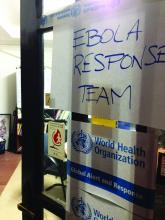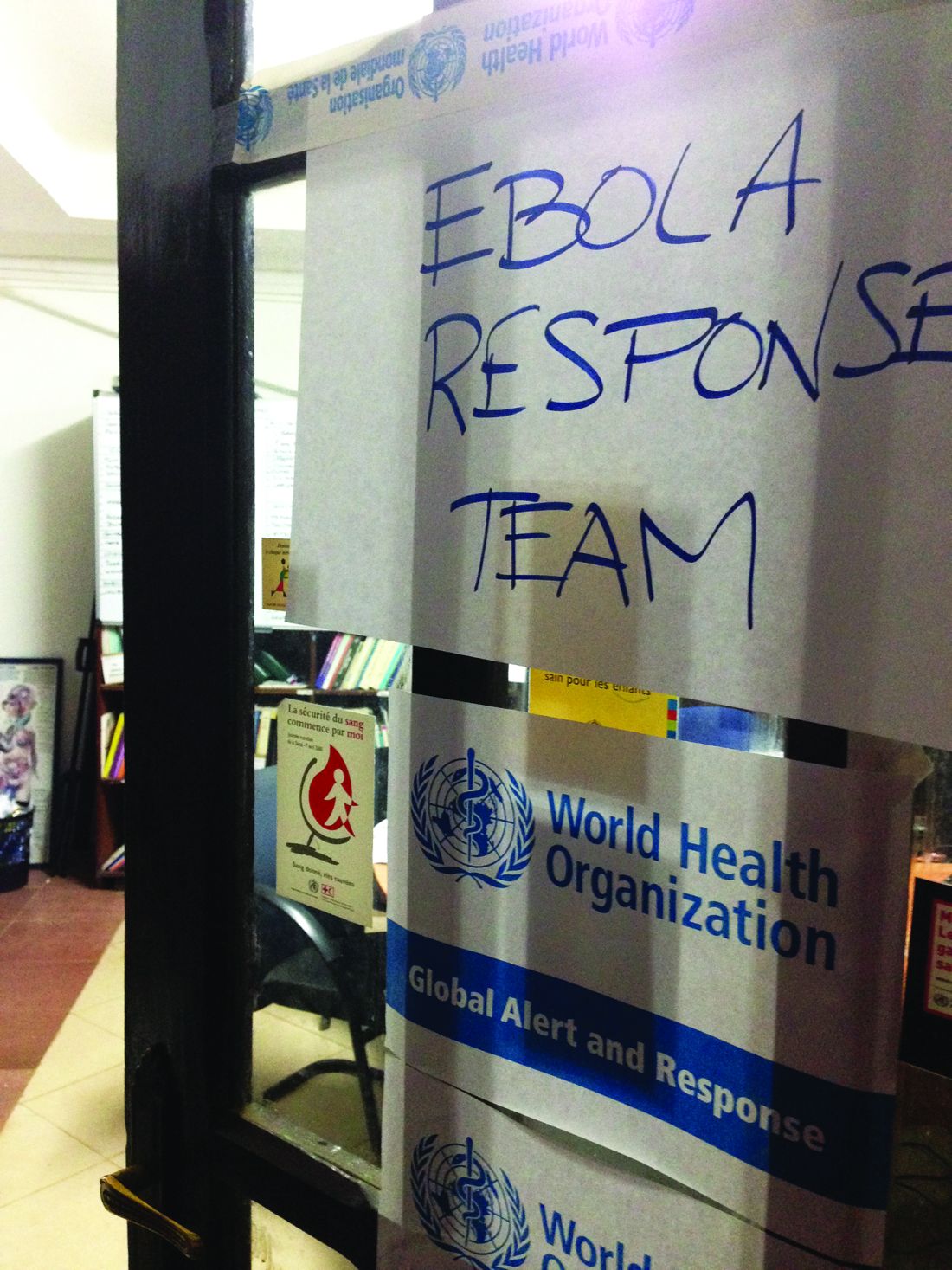User login
The struggle to defeat Ebola virus disease continues globally, although it may not always make the headlines. To catch up on what you may have missed, here are some notable news items and journal articles published over the past few weeks that are worth a second look.
The rVSV-ZEBOV recombinant vaccine offers substantial protection against Ebola virus disease, according to the results of a vaccine trial in Guinea, with no cases among vaccinated individuals from day 10 after vaccination in both randomized and nonrandomized clusters.
A new spatiotemporal analysis method may help to effectively control emerging infections like Ebola by exploiting available longitudinal incidence data at different geographical locations to monitor local epidemics, determine the extent of spatial spread, reveal the contribution of local and imported cases, and identify sources of introductions in uninfected areas.
A study in Guinea found that time to clearance of Ebola virus RNA from seminal fluid varies greatly between individuals and could be more than 13 months.
The results of a case study of a 9-month-old infant who died of Ebola virus disease with unknown epidemiologic link strongly suggest Ebola virus transmission to the child through breastfeeding.
The overall success in monitoring more than 99% of incoming travelers to the United States during the Ebola virus epidemic resulted, in part, because of the vigilance of state, local, and territorial health departments and the preparedness infrastructure that enabled jurisdictions to fully implement and follow Centers for Disease Control and Prevention guidance on monitoring of persons with potential Ebola exposure.
A study in the Journal of Infectious Diseases found the Cepheid Xpert Ebola assay to be accurate and precise for detecting Ebola virus in whole semen.
There is a need for a long-term follow-up of Ebola virus disease survivors in Guinea, according to a report in Tropical Medicine & International Health, and more efforts to support the social, professional, and economic reintegration of survivors, especially in rural areas.
A recent study in Sierra Leone supported the role of Ebola holding units as a safe method for isolation of suspect Ebola virus disease patients and the role of these units in limiting the spread of Ebola virus disease.
The modified Xpert Ebola virus assay for semen samples is optimal for large-scale monitoring of Ebola virus RNA persistence in male survivors, according to an analysis in the Journal of Infectious Diseases.
Researchers at Tufts University studied various hand hygiene techniques in communities facing Ebola virus outbreaks, and concluded that communities should use whichever hand-washing methods are most acceptable, available, and sustainable for community hand washing.
Indian investigators applied the queuing mathematical modeling technique to the Guinea 2014 Ebola virus disease outbreak and found that the use of two quarantine centers to combat the outbreak would have served as an adequate control measure. They said the queuing technique could be used to manage the manpower and material resources in the combat against Ebola virus disease outbreak.
[email protected]
On Twitter @richpizzi
The struggle to defeat Ebola virus disease continues globally, although it may not always make the headlines. To catch up on what you may have missed, here are some notable news items and journal articles published over the past few weeks that are worth a second look.
The rVSV-ZEBOV recombinant vaccine offers substantial protection against Ebola virus disease, according to the results of a vaccine trial in Guinea, with no cases among vaccinated individuals from day 10 after vaccination in both randomized and nonrandomized clusters.
A new spatiotemporal analysis method may help to effectively control emerging infections like Ebola by exploiting available longitudinal incidence data at different geographical locations to monitor local epidemics, determine the extent of spatial spread, reveal the contribution of local and imported cases, and identify sources of introductions in uninfected areas.
A study in Guinea found that time to clearance of Ebola virus RNA from seminal fluid varies greatly between individuals and could be more than 13 months.
The results of a case study of a 9-month-old infant who died of Ebola virus disease with unknown epidemiologic link strongly suggest Ebola virus transmission to the child through breastfeeding.
The overall success in monitoring more than 99% of incoming travelers to the United States during the Ebola virus epidemic resulted, in part, because of the vigilance of state, local, and territorial health departments and the preparedness infrastructure that enabled jurisdictions to fully implement and follow Centers for Disease Control and Prevention guidance on monitoring of persons with potential Ebola exposure.
A study in the Journal of Infectious Diseases found the Cepheid Xpert Ebola assay to be accurate and precise for detecting Ebola virus in whole semen.
There is a need for a long-term follow-up of Ebola virus disease survivors in Guinea, according to a report in Tropical Medicine & International Health, and more efforts to support the social, professional, and economic reintegration of survivors, especially in rural areas.
A recent study in Sierra Leone supported the role of Ebola holding units as a safe method for isolation of suspect Ebola virus disease patients and the role of these units in limiting the spread of Ebola virus disease.
The modified Xpert Ebola virus assay for semen samples is optimal for large-scale monitoring of Ebola virus RNA persistence in male survivors, according to an analysis in the Journal of Infectious Diseases.
Researchers at Tufts University studied various hand hygiene techniques in communities facing Ebola virus outbreaks, and concluded that communities should use whichever hand-washing methods are most acceptable, available, and sustainable for community hand washing.
Indian investigators applied the queuing mathematical modeling technique to the Guinea 2014 Ebola virus disease outbreak and found that the use of two quarantine centers to combat the outbreak would have served as an adequate control measure. They said the queuing technique could be used to manage the manpower and material resources in the combat against Ebola virus disease outbreak.
[email protected]
On Twitter @richpizzi
The struggle to defeat Ebola virus disease continues globally, although it may not always make the headlines. To catch up on what you may have missed, here are some notable news items and journal articles published over the past few weeks that are worth a second look.
The rVSV-ZEBOV recombinant vaccine offers substantial protection against Ebola virus disease, according to the results of a vaccine trial in Guinea, with no cases among vaccinated individuals from day 10 after vaccination in both randomized and nonrandomized clusters.
A new spatiotemporal analysis method may help to effectively control emerging infections like Ebola by exploiting available longitudinal incidence data at different geographical locations to monitor local epidemics, determine the extent of spatial spread, reveal the contribution of local and imported cases, and identify sources of introductions in uninfected areas.
A study in Guinea found that time to clearance of Ebola virus RNA from seminal fluid varies greatly between individuals and could be more than 13 months.
The results of a case study of a 9-month-old infant who died of Ebola virus disease with unknown epidemiologic link strongly suggest Ebola virus transmission to the child through breastfeeding.
The overall success in monitoring more than 99% of incoming travelers to the United States during the Ebola virus epidemic resulted, in part, because of the vigilance of state, local, and territorial health departments and the preparedness infrastructure that enabled jurisdictions to fully implement and follow Centers for Disease Control and Prevention guidance on monitoring of persons with potential Ebola exposure.
A study in the Journal of Infectious Diseases found the Cepheid Xpert Ebola assay to be accurate and precise for detecting Ebola virus in whole semen.
There is a need for a long-term follow-up of Ebola virus disease survivors in Guinea, according to a report in Tropical Medicine & International Health, and more efforts to support the social, professional, and economic reintegration of survivors, especially in rural areas.
A recent study in Sierra Leone supported the role of Ebola holding units as a safe method for isolation of suspect Ebola virus disease patients and the role of these units in limiting the spread of Ebola virus disease.
The modified Xpert Ebola virus assay for semen samples is optimal for large-scale monitoring of Ebola virus RNA persistence in male survivors, according to an analysis in the Journal of Infectious Diseases.
Researchers at Tufts University studied various hand hygiene techniques in communities facing Ebola virus outbreaks, and concluded that communities should use whichever hand-washing methods are most acceptable, available, and sustainable for community hand washing.
Indian investigators applied the queuing mathematical modeling technique to the Guinea 2014 Ebola virus disease outbreak and found that the use of two quarantine centers to combat the outbreak would have served as an adequate control measure. They said the queuing technique could be used to manage the manpower and material resources in the combat against Ebola virus disease outbreak.
[email protected]
On Twitter @richpizzi

